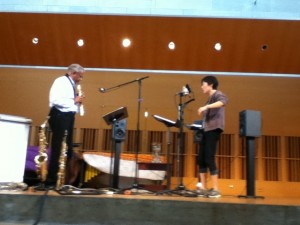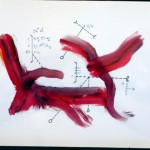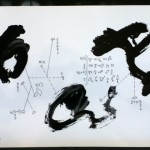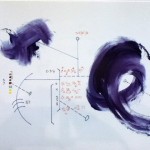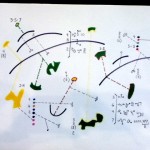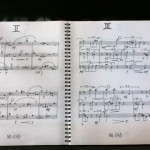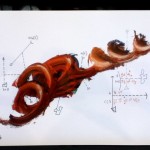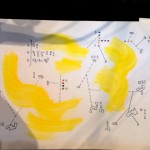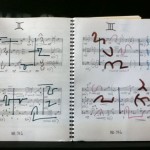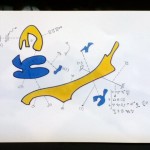Over the summer, I dusted off my rusty broadcast journalist chops and edited an 18-minute educational documentary on Anthony Braxton and his Syntactical Ghost Trance Music (SGTM). The video Introduction to Syntactical Ghost Trance Music premiered earlier this month at “ANTHONY BRAXTON: 50+ YEARS OF CREATIVE MUSIC” international conference in Darmstadt, Germany, and is now available in its entirety for free viewing on Tri-Centric’s Vimeo channel (please click on the link). Most of the material has never been seen before by the public, including rare rehearsal, recording and interview footage.
The full audio recording is available at Tri-Centric’s New Braxton House Records. Some SGTM scores are available at their Print Music store.
How did this come about? Back in 2017, when we were recording the SGTM box set which I directed and co-produced with Anthony, René Pierre Allain at Scholes Street Studio set up cameras so that we could also have a video document of the sessions. I knew that there would be enough material for a mini-film, so I asked Anthony for a sit-down interview which lasted about 45 minutes. The video is based on that interview.
For many years, it weighed on me that I wasn’t able to put the footage in a form for others to enjoy. I wish I could have finished this video while vocalist Michael Douglas Jones and Tri-Centric friend Hugo de Craen were still with us.
Having an educational video also became a practical issue once I started to spend more time teaching. It would be valuable to have more material about this music which featured artists in action.
Thankfully, technology has evolved to a point so that I could now edit the film on my laptop. I started with a storyboard around the interview, and by giving it the title “Introduction to Syntactical Ghost Trance Music”, I was able to shape the project. Mostly, I was thinking about my students. I wanted to pass on the experience to the next generation.
It was fortuitous that I was asked to present at the conference. It was an opportunity to finally do something with the footage. Thank you to everyone who made this happen. Full credits below.
————————————————————————————————
All music and scores by Anthony Braxton
Written, edited and narrated by Kyoko Kitamura
Tri-Centric Vocal Ensemble:
Roland Burks, Tomás Cruz, Lucy Dhegrae, Chris DiMeglio, Kristin Fung, Nick Hallett, Michael Douglas Jones, Kyoko Kitamura, Adam Matlock, Anne Rhodes, Kamala Sankaram, Elizabeth Saunders
GTM (Syntax) 2017 recording session footage, Anthony Braxton interview footage and Tri-Centric Vocal Ensemble group photo by René Pierre Allain at Scholes Street Studio
Big Ears 2016 rehearsal footage and Trillium E recording session photos by Kyoko Kitamura
Kitamura/Rhodes duo footage by Adam Matlock
Tri-Centric Vocal Ensemble Roulette performance, Trillium J and Pine Top Aerial Music footage courtesy of Tri-Centric Foundation
Anthony Braxton conducting Composition No. 339 phone footage by Chris DiMeglio
Special thanks to James Fei, Carl Testa, Taylor Ho Bynum, Jon Rosenberg, Andrew Raffo Dewar
Copyright 2023 Tri-Centric Foundation

